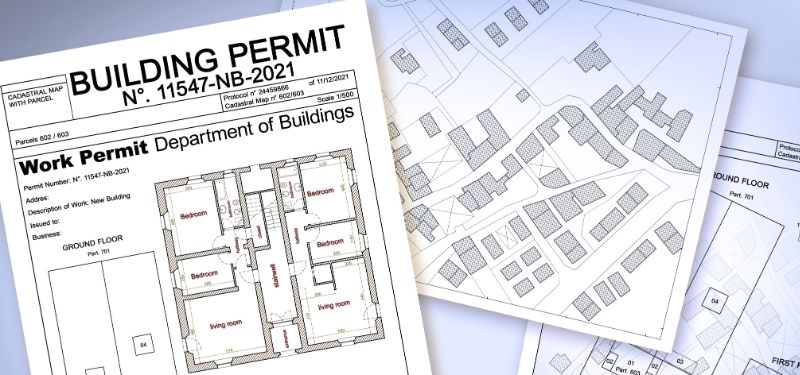Aug 28,2025
Fifty years ago in 1975, the Commonwealth adopted G.L. c. 40A, known as the Zoning Act (“Act”). The Act, which applies to every city and town in the Commonwealth except Boston, included only a few statewide standards, such as the protection of certain existing lots through statutory grandfathering provisions, in order to encourage cities and towns to establish local control over planning. It was, for the most part, instruction, with guidelines and standards, to Massachusetts cities and towns to adopt their own zoning ordinances and bylaws so that those communities could grow in a way that they chose. As a result, those cities and towns created zoning districts and adopted as-of-right uses and dimensional and density requirements for each district. They also preserved the right of property owners to seek relief for potentially acceptable uses, and for relief from dimensional and density requirements, through requests for special permits and variances, in accordance with Sections 9 and 10 of the Act and corresponding local standards for such relief.
These changes will hopefully result in the creation of new and diverse housing stock through the amendment of existing zoning restrictions that would otherwise prohibit such development, as well as ease the burden of obtaining permitting for such projects.
The growing shortage in housing in the Commonwealth, however, has resulted in a recent shift away from the emphasis on local control over growth.
Insufficient housing, and the increase in home prices resulting from the shortage in available housing, is a significant challenge to Massachusetts residents and families. In order to address these concerns, the Commonwealth instituted the Housing Choice Initiative, a multi-pronged approach to encourage the development of new housing, including:
- the provision of incentives, rewards and technical assistance to cities and towns to encourage them to implement planning to allow for the construction of diverse housing stock;
- offering grants to cities and towns designated as demonstrating a commitment to increasing housing in their communities;
- establishment of certain mandates, including the creation of multi-family zoning requirements for MBTA communities; and
- changes to certain local voting requirements geared to ease development and the permitting process.
The statutory change in local voting requirements seems to have received less attention than other aspects of the Initiative and, because of its significance, is addressed here.
Historically, any vote to adopt or amend a zoning ordinance or bylaw in Massachusetts required a two-thirds “supermajority” vote of a city council or town meeting – a burdensome requirement believed to play a significant role in Massachusetts’ current housing crisis.
The requirement was recently reduced to a simple majority for certain developments, however.
The Legislature recently revised the Zoning Act, including the revision of Section 5, by reducing the number of votes needed to enact certain zoning ordinances (in cities) and bylaws (in towns) from a 2/3 supermajority to a simple majority. In particular, the revision provides that only a majority vote is now required to be taken by a city council, town council or town meeting for the following:
- amendments to existing zoning ordinances or bylaws to allow multi-family housing and mixed-use development in “eligible locations,” defined by the revised statute as “areas that by virtue of their infrastructure, transportation access, existing underutilized facilities or location make highly suitable locations for residential or mixed-use smart growth zoning districts or starter home zoning districts, including…areas near transit stations…or…areas of concentrated development, including town and city centers, other existing commercial districts…and existing rural village districts,” as an “as-of-right” use;
- amendments to existing zoning ordinances or bylaws to allow for accessory dwelling units and open-space residential development as an “as-of-right” use;
- amendments to existing zoning ordinances or bylaws to allow, by special permit: (1) multi-family housing and mixed-use development in eligible locations; (2) an increase in permissible density of population or intensity of a particular use in a proposed multi-family or mixed-use development; (3) accessory dwelling units in detached structures; and (4) diminution in the amount of required parking for residential or mixed-use development;
- adoption of ordinances or bylaws that provide for Transfer of Development Rights (TDR) zoning or natural resource protection that promote concentration of development in areas that a city or town deems appropriate, but will not result in diminution in the maximum number of housing units that could be developed, or to modify limits on the bulk and height of structures, yard sizes, lot areas, setbacks, open space, parking and building coverage requirements to allow for housing development beyond what would be allowed under current restrictions; and
- the adoption of a smart growth zoning district or starter home zoning district in accordance with G.L. c. 40R, § 3.
The Legislature also revised Section 9 of the Act by reducing the supermajority vote required from a permit granting authority to a majority vote for certain special permits, including permits for:
- multi-family housing located within a half mile of a commuter rail station, subway, ferry terminal or bus station, provided that at least ten percent of the housing is affordable;
- mixed-use developments in centers of commercial activity, including city and town centers and commercial districts, provided that at least ten percent of the housing created would be affordable; and
- reduced local parking space to residential unit ratio zoning requirements, provided that the reduced parking would result in the production of additional housing units.
These changes will hopefully result in the creation of new and diverse housing stock through the amendment of existing zoning restrictions that would otherwise prohibit such development, as well as ease the burden of obtaining permitting for such projects.
If you have a potential project that may benefit from these statutory changes, the attorneys at Moriarty Bielan & Malloy LLC have the experience and knowledge to successfully assist you in pursuing zoning changes to accommodate your project, and/or to guide you through the permitting process.


